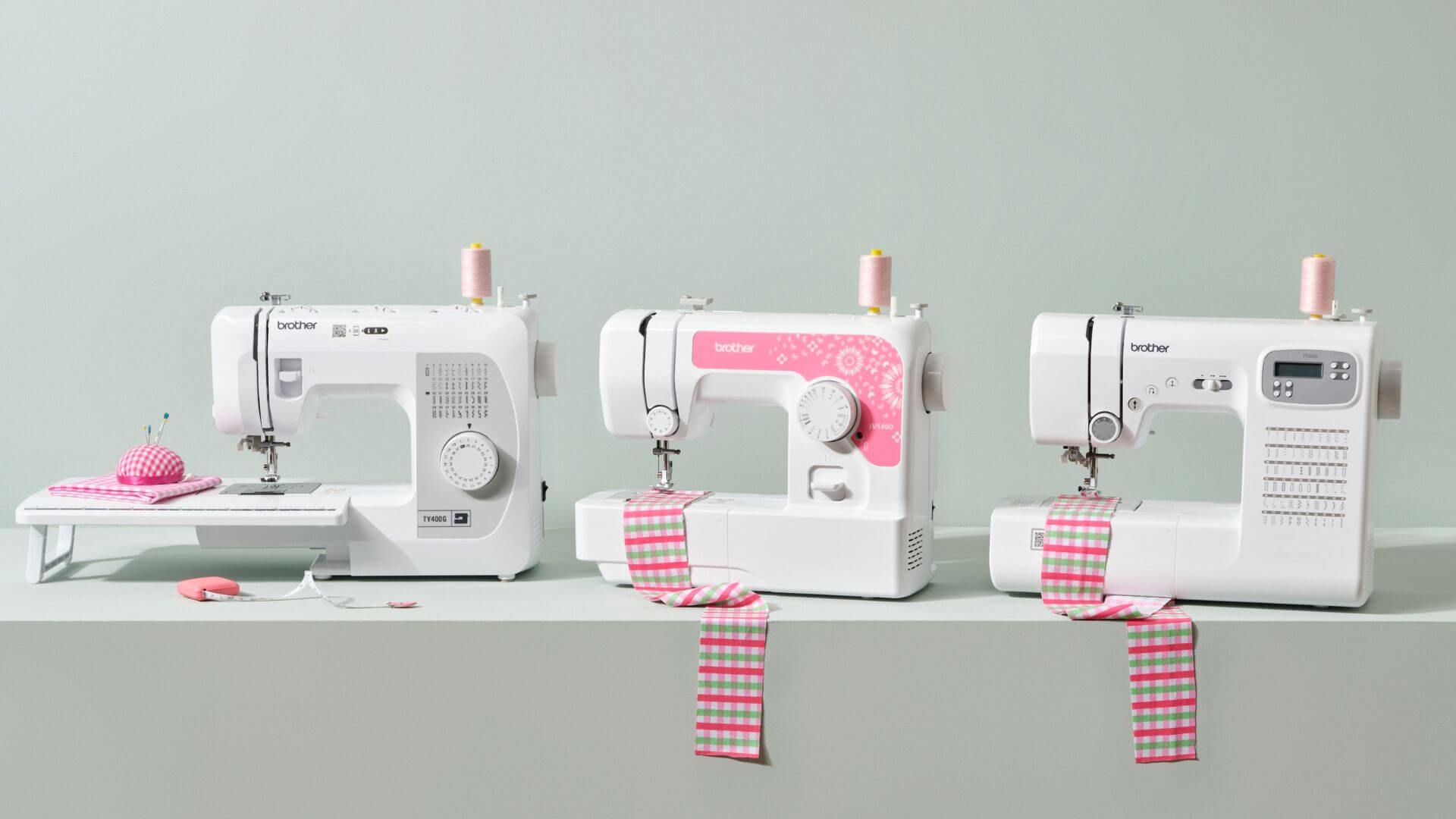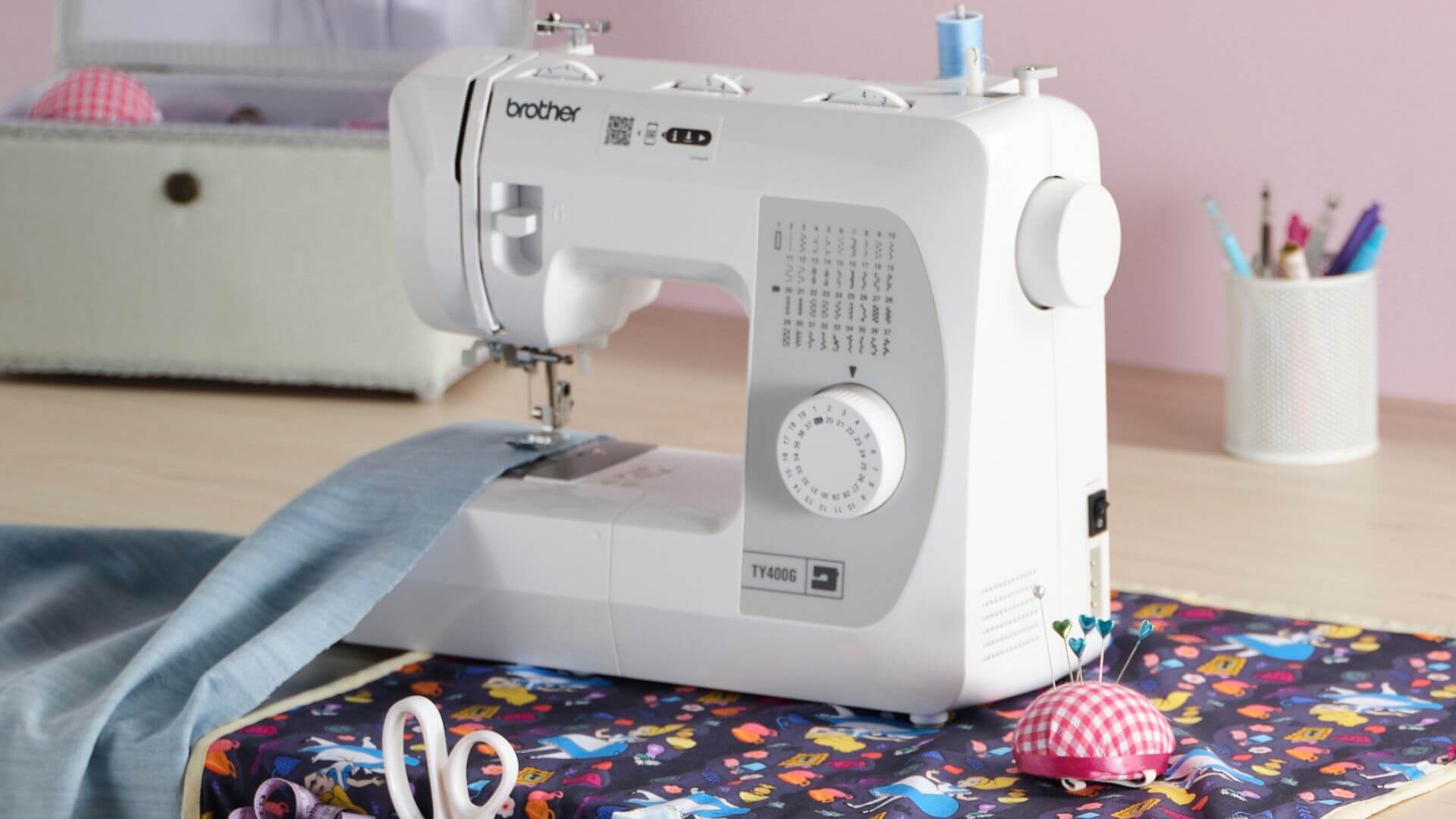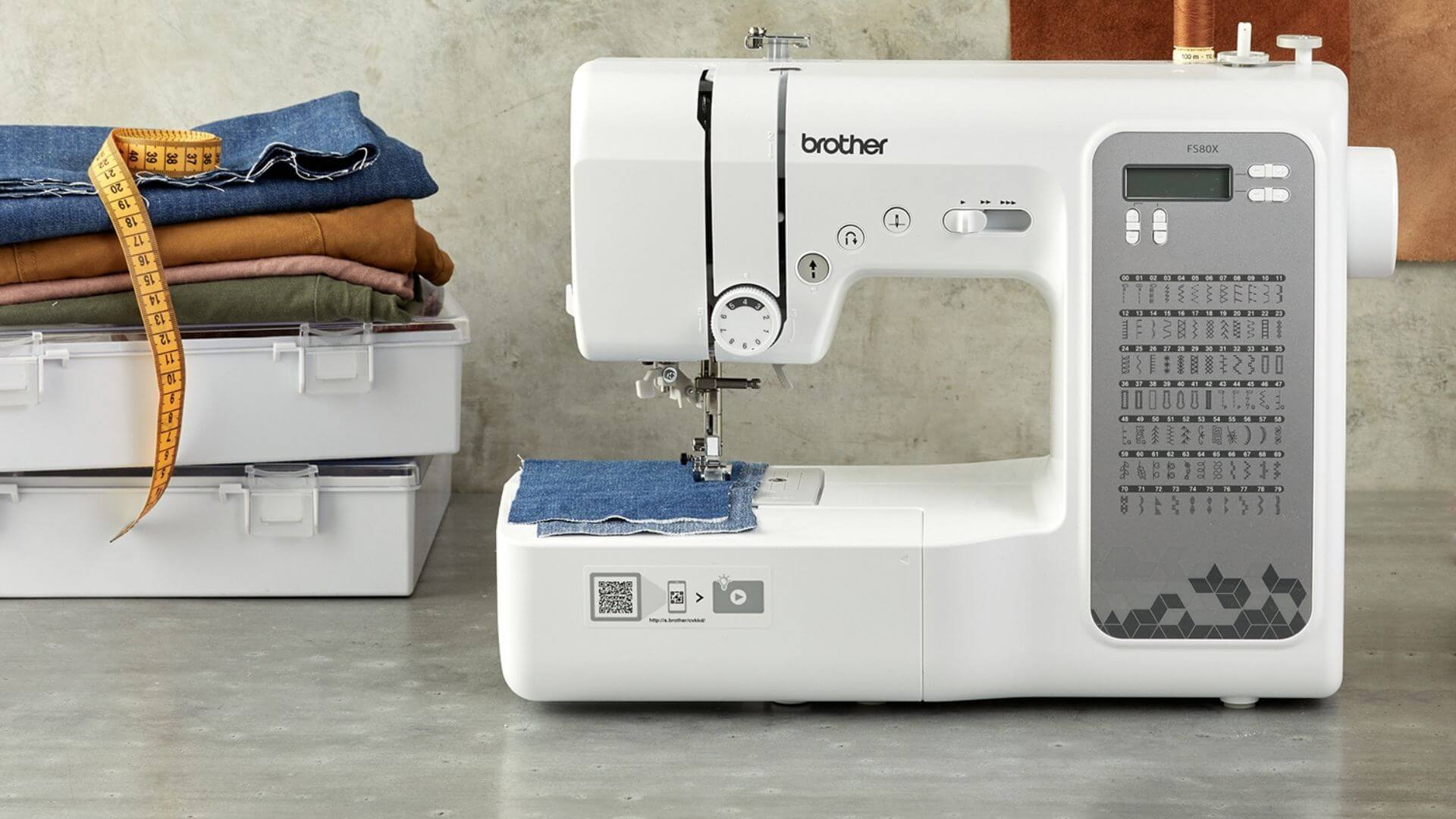 | ||
| Your browser is not supported. | ||
|
Please browse our site using any of the following options:
| ||
Manual Vs Computerised Sewing Machines - Which Is Best For You?

If you ever want to do more than sew a button or fix a small tear, you'll need to use a sewing machine. Sewing machines have revolutionised the world of sewing, making the process faster, easier and more accessible for beginners to learn.
When it comes to choosing a sewing machine, there are many different factors you need to take into account - which brand you want, what it's made of and what functions it has. This last point will largely depend on what we think is one of the most important characteristics of a sewing machine - whether it's a manual sewing machine or a computerised one.
At Spotlight you can find a great range of quality sewing machines from brands such as Singer, Brother and Elna. We've got both computerised and manual sewing machines for you to choose from, but how do you know which is the best sewing machine for your needs? Keep reading, and we'll dive into these two kinds of sewing machines and everything you need to know about them!
Manual Sewing Machines
A manual sewing machine (also called a mechanical sewing machine) is a sewing machine that features no circuit board, computer chip or other internal digital components. These types of sewing machines have been around for hundreds of years, and indeed, many of them will last you decades if cared for properly!
The positives of manual sewing machines
Here are some of the great things about manual sewing machines.
- They last a long time. A good quality manual sewing machine won't need to be upgraded or updated, as the features usually remain the same… unless some sewing machine breakthrough occurs, like the needle threading mechanic - some newer manual sewing machines will have this feature! This means you won't need to replace your mechanical sewing machine unless a major break occurs, and even then a sewing machine centre may be able to fix it for you.
- They are easy to fix. Because they don't have any overly complicated parts in them, any issues you get with your manual sewing machine are usually easy to fix. Your local sewing machine servicing centre will be able to repair them for you, or there are plenty of online guides you can use if you'd like to try repairing your mechanical sewing machine yourself with extra sewing machine parts.
- They are easy to learn on. Many beginners enjoy learning on a manual sewing machine because they are clear to use and don't have a large number of niche functions to distract and possibly confuse them with. They are especially good for sewists who aren't particularly tech-savvy - many computerised sewing machines have hundreds of different stitches and dozens of functions to choose from, which can make them overwhelming to use.
- They are great value. Even the most expensive manual sewing machines will usually be cheaper than many computerised sewing machines, due to the large amount of functions a digital machine can have. But mechanical sewing machines, thanks to their more streamlined design, will last you many years and are less prone to breaks and malfunctions than their digital counterparts. This means you'll save money on repairs and potential replacements as well!
The negatives of manual sewing machines
Unfortunately, mechanical sewing machines aren't without their drawbacks.
- They can be very heavy. This is especially true for older manual sewing machines, as they were usually made entirely from metal. Their weight can make them hard to move around, and you'll need a steady surface to use them on. However, it does mean they tend to shake and rattle less than a sewing machine made of plastic.
- It takes longer to use them to make complicated stitches. You will need a good understanding of how the stitch you want to make works if you want to create it on a manual sewing machine. Whereas digital sewing machines will do the thinking for you!
- They can be tiring to use. Because they are so hands-on, you'll need to be constantly monitoring, adjusting and powering your mechanical sewing machines. Both hands and your foot will be in use, which can become tiring on long projects. Creating intricate stitches will also require you to look closely at your fabric and needle, which can strain your eyes.
- You need a greater knowledge of sewing to use them with tricky fabrics and threads. Digital sewing machines can recommend the right needle, thread and fabric for certain projects, but with a manual sewing machine, you're all on your own! Of course, today's easy access to the internet means you can search for answers yourself using a phone or computer, but those without access to the internet will still be stuck.
Who are manual sewing machines best for?
Manual sewing machines are a great choice for:
- Beginner sewists who want to learn their sewing basics. The minimalist design of a manual sewing machine makes learning how to use one easy for beginners. Beginners will still need to learn how to work the machine itself, which means they'll obtain a good understanding of sewing works, which can also improve their hand-sewing skills.
- Sewists who just want to be able to repair and make minor alterations to clothes. If you're not really interested in making clothes from scratch but rather want to be able to repair, alter and prolong the life of your own clothes, then a manual sewing machine, with its durability and useful functions, is perfect for you.
- Sewists who aren't comfortable with technology. If you struggle to use a mobile phone or find using a computer for anything beyond sending emails a nightmare, a manual sewing machine will do everything you need it to without any complicated inputs or commands necessary.
- Sewists who want a machine that will last a lifetime. Because they're easy to repair and don't have parts that will become outdated, a good mechanical sewing machine will last you many years! In fact, you can find machines made in the 1940s and 1950s that are still great to use today.

Computerised Sewing Machines
A computerised sewing machine (also called a digital or sometimes an electric sewing machine, even though manual sewing machines can also be electric) is a modern, high-tech sewing machine. They have many different functions and have made sewing complicated stitches and materials much easier for everyone.
The positives of computerised sewing machines
They can do so many things, so it follows that there are a lot of positives about computerised sewing machines!
- They can create a huge range of stitches and patterns. From simple to complex, digital sewing machines take all the effort out of creating neat, tidy and professional stitches - all you need to do is feed through the fabric. You may even discover new stitches you've never heard of!
- You can download extra patterns and stitches to add to your digital sewing machine. Many computerised sewing machines allow you to add additional patterns, stitches and designs using a USB stick. This allows you to curate a collection of your favourite designs to be used again and again.
- They can assist you in choosing the right materials for your project. Many digital sewing machines have features that can recommend the best stitch type and tension for your fabric, creating precise stitches no matter your material type. Computerised machines tend to sew synthetic fabrics better than manual ones too!
- They are less intensive to use. Because they run using electricity, you don't need to use a foot pedal to run your digital sewing machine. And because they do much of the calculating and stitching themselves, you don't need to be intensely adjusting and monitoring your work either.
The negatives of computerised sewing machines
These modern sewing machines aren't for everyone!
- They can be difficult to learn on. Because of their many functions and options, starting on a digital sewing machine can be overwhelming for a beginner sewist. On the other hand, tech-savvy beginners may enjoy quickly learning how to utilise their computerised sewing machine to make advanced stitches.
- They can be hard or impossible to fix. Due to their computerised interior, fixing issues with the chip or circuit board can be really hard. Sometimes, they simply cannot be fixed, even by a specialist machine service centre.
- They become outdated. Due to how technology is always improving, even the most high-tech digital sewing machines will eventually become outdated. This means that eventually, companies will stop producing the parts needed to repair older machines, so when one breaks you'll be forced to upgrade.
- You probably won't use most of their features. Let's face it, how many stitches will you be really using? If you don't need more than the basics, then the sheer number available on your computerised sewing machine will probably never be used. This means you won't get as much as value out of a digital sewing machine as you'd like - after all, they can be expensive!
Who are computerised sewing machines best for?
You'll enjoy a digital sewing machine if:
- You want to create projects with a wide range of stitch types. The massive range of stitches available in a computerised sewing machine means you can always find the right stitch for your needs. You may even be inspired to use a new stitch by the many options, and who knows, maybe you'll find a new favourite stitch!
- You want to create professional-looking clothes and crafts. Digital sewing machines create uniform, precise and neat stitches as they work, giving your clothing and crafts a slick look that you'd usually see in products bought from stores.
- You're a beginner who wants to learn to sew quickly. If you're comfortable with technology, beginner sewists will love learning how to create complicated stitches with the help of a computerised sewing machine.
- You want the best sewing machines for your hobby. Whether it's a hobby or your professional gig, if you want the best sewing machine available, then it'll be a computerised one. With their huge range of functions, light weight and ease of use, you can create more quality garments quickly with a digital sewing machine.

- | Pros | Cons |
Manual Sewing Machines | - Durable and long-lasting - Good to learn on - Easy to fix - Affordable | - Heavy - Hard to make tricky stitches with - Tiring if used for long periods of time - Hard to use with unusual materials |
Computerised/Digital Sewing Machines | - Huge range of built-in stitches - Can download extras - Helps you choose fabric, tension and stitch type - Less intensive to use | - Hard to learn on - Difficult to fix - Become outdated - Over-abundance of features many won't use |
Find The Perfect Sewing Machine At Spotlight
Ready to choose the best sewing machine for your needs? Browse our range of computerised and manual sewing machines online, where you can quickly pay and have your order home delivered. Alternatively, visit your nearest Spotlight store and our lovely team will help you choose a sewing machine in person!
For more insight into everything sewing, read our blogs on sewing machine foot types, cosplay fabrics and our beginners guide to sewing. And if you're ready to purchase, have a quick read of our buying guides on sewing machines, sewing machine parts and sewing needles to ensure you're getting the right supplies for your next sewing project.




